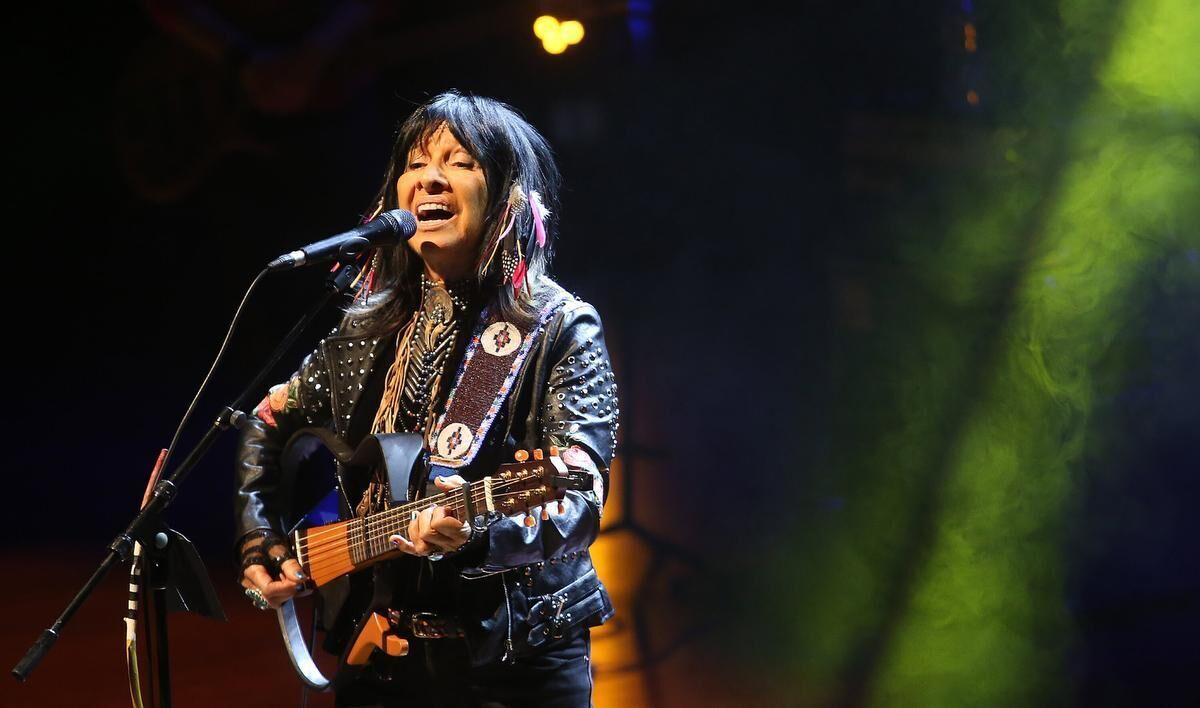
“This has real impacts, and we can’t overlook the damage fraudulent representation causes to people.”
A former Juno Awards judge and nominee is calling on the Canadian Academy of Recording Arts and Sciences to revoke the awards given to Buffy Sainte-Marie throughout her long career.
Tim Johnson, an Ohsweken resident and the artistic producer for Celebration of Nations held annually at the Performing Arts Centre in St. Catharines, said Sainte-Marie’s deception about her Indigenous identity has caused incalculable reputational and financial damage to authentic Indigenous musicians.
“When you are a Juno Award-winning artist, opportunities open for you both in terms of notoriety, income and prestige,” said Johnson, a Mohawk, Wolf Clan, from Six Nations of the Grand River.
“This has real impacts, and we can’t overlook the damage fraudulent representation causes to people.”

A recent CBC News report investigating Sainte-Marie’s ancestry located her birth certificate, which says she was born in 1941 in Stoneham, Mass. The certificate lists the baby and parents as white and includes the signature of an attending physician. CBC corroborated the information on the birth certificate based on Sainte-Marie’s marriage certificate, a life insurance policy, the United States Census and interviews with family members.
Johnson said despite Sainte-Marie’s efforts on behalf of Indigenous people, he couldn’t ignore the fact her deception robbed opportunities for authentic musicians to showcase their work.
He said it’s a form of identity theft.
“I’d like the folks who program Indigenous artists across Canada to make a concerted and sincere effort to look at the phenomenal musical talent within the Indigenous world and Canada.
“Let’s bring some other names forward and create those opportunities that in some ways have been suppressed for the last 30 to 40 years.”
He cited a Facebook post by Six Nations singer-songwriter Lacey Hill, who said recently, “I’m a real Indigenous person … hire me! I have confidence. I would do awesome if only given the chance.”
Sainte-Marie, 82 and recently retired, self-identified as Algonquin and Mi’kmaq before saying she was Cree, adopted from a mother in Saskatchewan. In a statement picked up by Canadian Press the day before the story broke, Saint-Marie said she doesn’t know who her birth parents are or where she’s from before adding she is “a proud member of the Native community with deep roots in Canada.”
Johnson was an associate director for museum programs at the Smithsonian Institution’s National Museum of the American Indian. One of his most popular exhibits at the Smithsonian served as the basis for the award-winning documentary film: “RUMBLE: The Indians Who Rocked The World.”
Johnson was also the executive producer on the 2016 Juno-nominated album spawned by the documentary.
The Juno judges selected Sainte-Marie’s “Power in the Blood” as the Aboriginal Album of the Year. It was her seventh Juno Award, including an induction into the Hall of Fame and a humanitarian award.
Sainte-Marie is also a Companion of the Order of Canada, holds 15 honorary degrees from post-secondary schools across Canada and the U.S., and received Queen Elizabeth II’s Diamond Jubilee Medal.
“I feel an obligation and responsibility to our community to let them know what is really transpiring here and how significantly we need to take these kinds of things when people are pretending to be Indigenous,” Johnson said.
“There is also a responsibility to speak out and defend those harmed by the deception.”
Sainte-Marie headlined shows twice at the Celebration of Nations. In hindsight, Johnson said there was evidence of deception.
“When you look at her aesthetic, she’s a costume Indian,” Johnson said. “She’s not authentic. I have a whole different sense of her when I look at her photographs now.
“I realized something that just looks off. It’s an exaggerated or overdone look. With the information about Buffy that’s been revealed, it suddenly becomes all too apparent — what you see when you look at her photographs is costume Indian.
“That’s a characteristic of people who want to claim that they have some Indigenous identity. They start to overplay it.”
To those who doubt the CBC report, Johnson said the evidence is overwhelming and recommends they read the articles and watch the CBC’s Fifth Estate segment for themselves.
“Many of us who’ve been working in this field for a long time have always taken her at her word about having some Indigenous identity,” Johnson said.
Johnson said he would like to see something akin to the U.S. government’s Indian Arts and Crafts Act enacted in Canada.
The act lays the rules and regulations for those who claim to create Indigenous art.
“You need certified identification to hold that qualification,” Johnson said. “As far as I know, Canada has no such legislation. I highly recommend that they consider implementing something like that.
“It’s just too soft and fuzzy to let people with no formal connections or membership within an Indigenous nation step forward and claim to be a part of that nation.
“Identity issues can be very complex within the Indigenous community, but we need to start from a point where we’re seeking to fully identify, certify and document Indigenous artists, whether visual artists, craftspeople or performing artists. It would benefit everyone to get tighter on these issues.”
